When approaching the latter stages of the football season, managers will begin to make tactical alterations in an attempt to get their side over the line and end on a high note. This is certainly the case for Xavi Hernández, who has been riddled with injury issues as he continues to navigate his farewell season at Barcelona. Still reeling from the loss of Busquets and his protégé Gavi being ruled out for the season, Xavi has handed the unceremonious defensive midfield role to an unlikely candidate.
Danish defensive star Andreas Christensen has recently been deployed at the base of midfield, often partnering the likes of Gündogan and de Jong in Barcelona’s double pivot — certainly more advanced than his familiar role of central defender. Christensen’s shift in position has seemingly begun to negate Barca’s defensive frailties, giving them an outside chance of both LaLiga and Champions League glory. Whilst initially only a momentary stop-gap and roll of the dice to gain results, the Dane has certainly capitalised upon their area of need, with his defensive minutes dwindling this season through the emergence of Pau Cubarsí and physicality of Ronald Araújo.
This tactical analysis and scout report will begin to highlight how Christensen has settled into the role and both his direct and indirect influences on Barcelona’s turnaround of late. Our analysis will address his importance in all stages of play, with his presence in midfield looking to play into the hands of his teammates further up the pitch and improve his side’s tactics going forward.
Christensen’s positioning and ability to utilise space
Lately, we have seen Andreas Christensen utilised in more advanced positions, with Xavi looking to tackle one of his biggest issues. He has yet to find complete balance in the defensive midfield, with the technical abilities of de Jong and Gündogan being wasted in a much deeper role and summer signing Oriol Romeu failing to impress in the build-up phase. Therefore, a positional switch for Christensen has emerged as a beacon of hope and a makeshift alteration which has improved Barcelona’s overall play.
When looking at the heat map for Christensen this season, he has been much more advanced, adding an extra level of defensive support to protect his side when out of possession. Barcelona’s tactical setup often revolves around the 3-2-5 in its initial build-up phase, with Christensen forming a double pivot with the likes of de Jong or Gündogan. His natural defensive tendencies allow his partner to have more offensive freedom, allowing the likes of Pedri and Gündogan to attack between the lines and provide an extra attacking outlet in the final third.
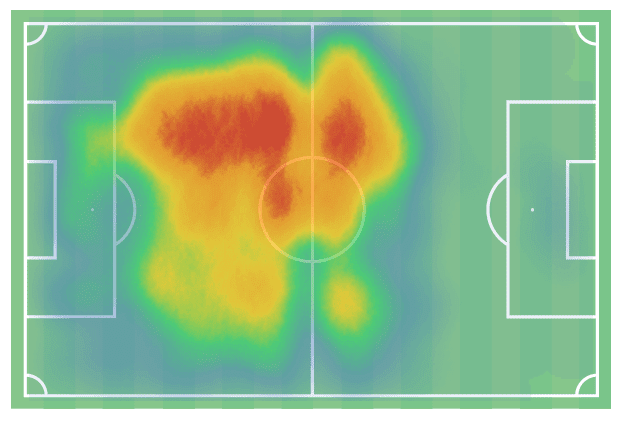
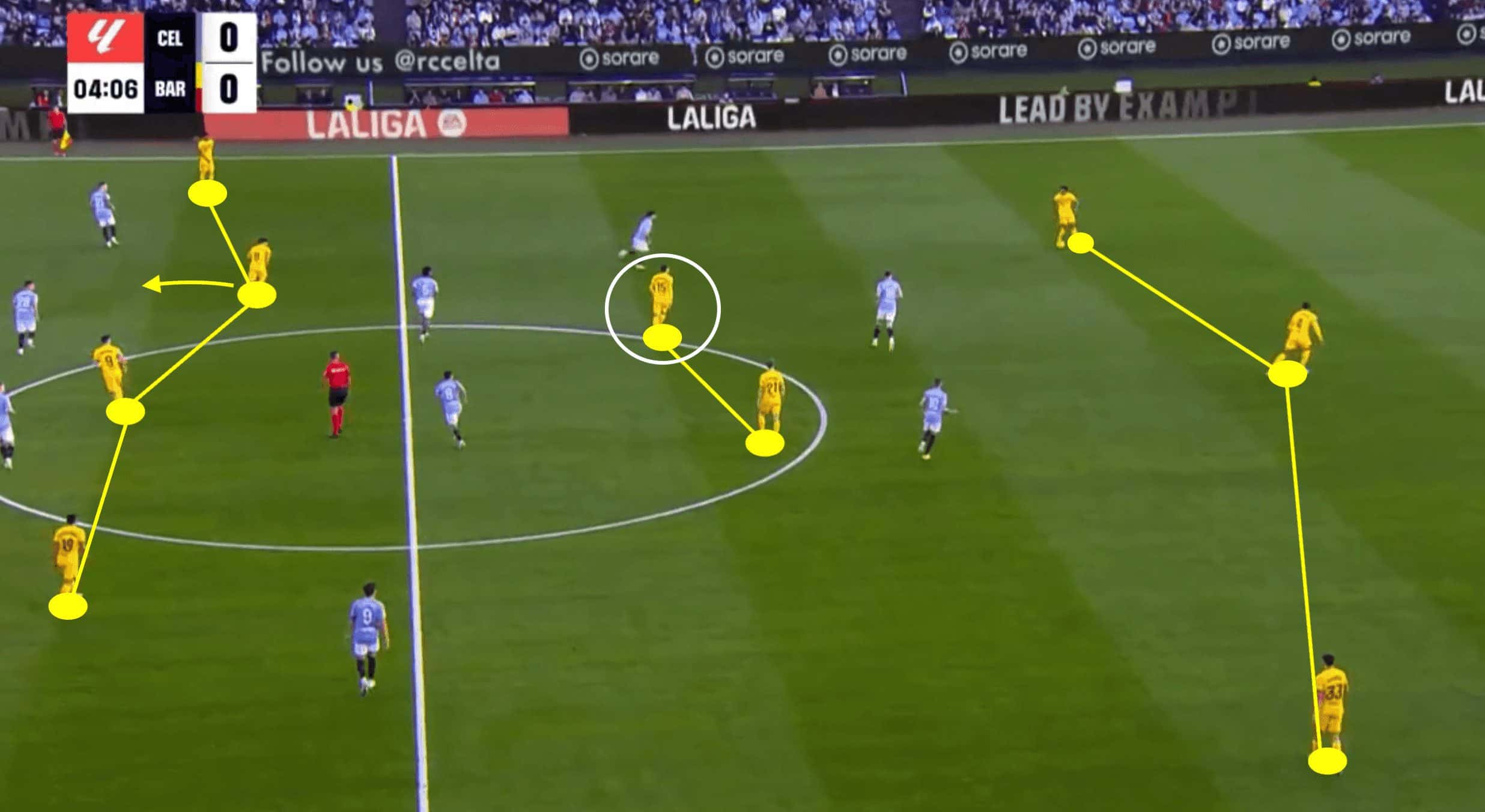
With Xavi looking to utilise João Cancelo further forward in the attacking phase and create space for his left winger to invert, Barcelona have often found themselves struggling in transition due to a lack of defensive numbers. However, Christensen’s playing in defensive midfield has highlighted how he can be effective when defending on the counter, providing defensive security when dropping deeper between the likes of Cubarsí and Koundé, who are often spread wider in their three-man defence. Despite being a central defender by trade, Christensen can recognise the threat of the opposition’s advanced midfielders’ late runs into the penalty area and often shadows their runs as opposed to regressing into a five-man defensive line. His ability to roam and occupy the wider areas of the pitch certainly allows him to stand out compared to his potential competitors for the starting berth. We often see Christensen tracking runs towards the flanks, not only allowing Koundé to slide centrally where he feels more comfortable but also to use his imposing stature to prevent crosses in the box and negate any progression from the opposition.
When sitting at the base of the midfield, the Dane acts as the initial barrier of defence, with his physical presence forcing the opposition into hasty decisions in the final third. In their Champions League encounter against Napoli, we can see Christensen use his body shape and defensive positioning to block passing outlets and force Di Lorenzo into the central areas. Because Barcelona were set up well with numerical superiority, Cancelo was able to regain possession with ease, and Barcelona could recycle the ball.
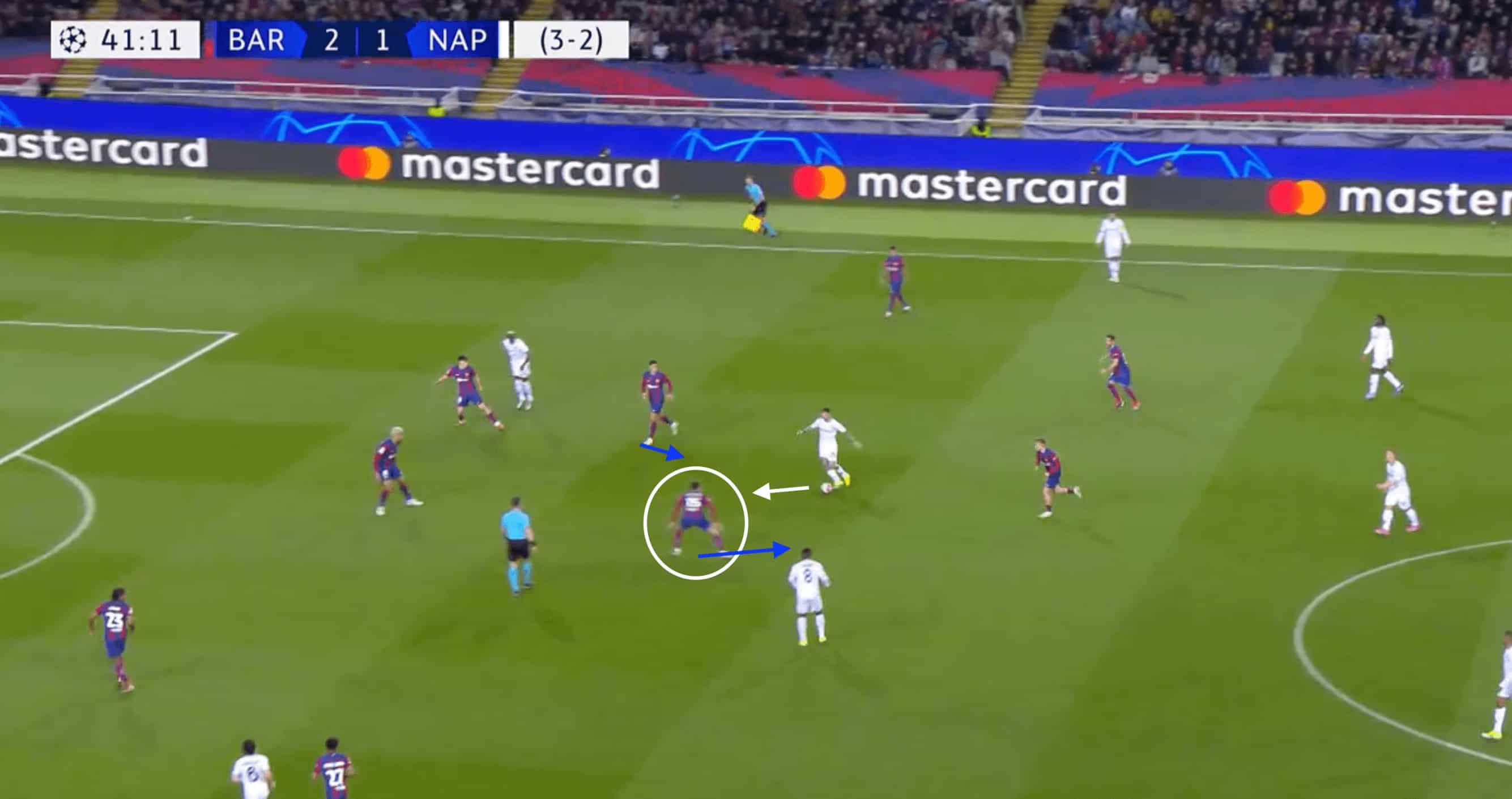
Another important aspect of Christensen’s game would have to be his contribution to Barcelona’s proactive high pressing. The presence of another defensive-minded player in midfield means that when playing with a high line, Christensen can look to remain tight to his marker and pin the opposition in their own half in an attempt to regain the ball back as advanced as possible.
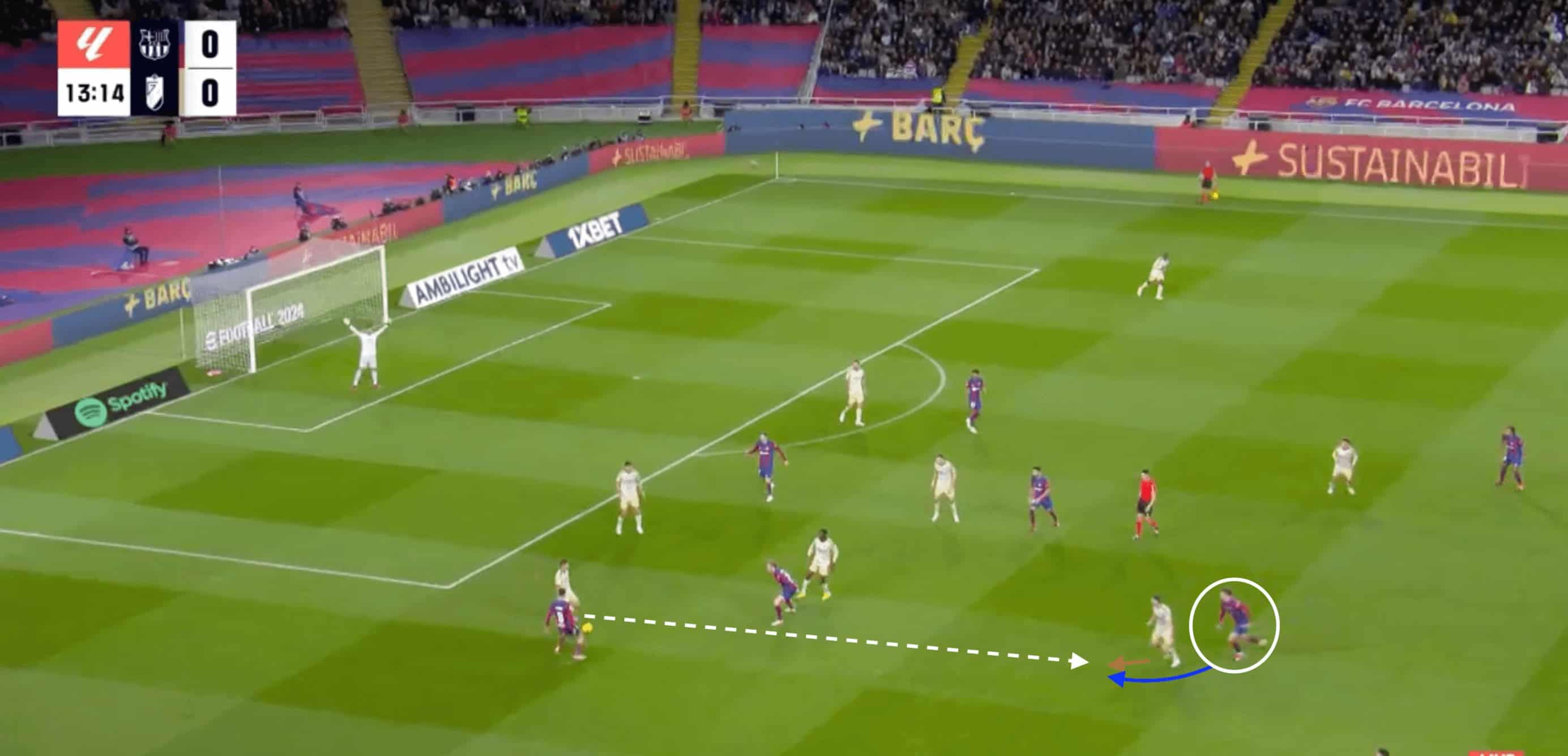
Positional flexibility and ball progression
One of the biggest revelations regarding Christensen and his shift to defensive midfield would have to be his ability to manipulate space and his willingness to roam. Whilst many would predict him to have a sense of rigidity and a tendency to remain as the more defensive member of the double pivot, he remains proactive off the ball and looks to advance and create passing outlets.
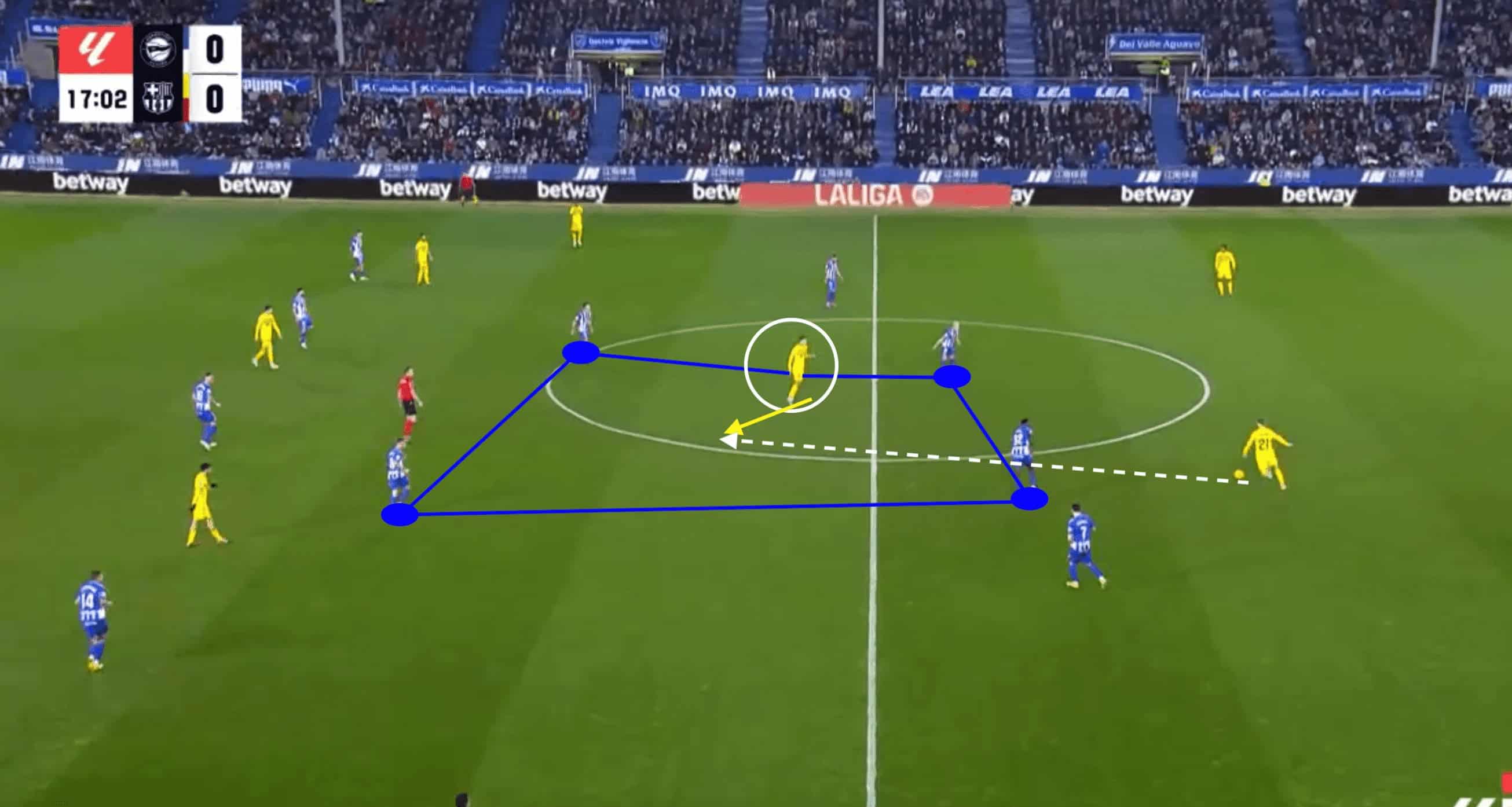
Having formed an intelligent relationship with his partner in the pivot, he recognises opportunities to advance should they drop deeper to receive the ball from the goalkeeper. Christensen’s off-the-ball movements have also had a positive indirect effect upon Barcelona’s build-up. Against Alaves, we can see Christensen’s presence drawing defensive attention and creating space for Araujo to hit a direct ball straight into the feet of Gündogan, with the German receiving between the lines and looking to launch an attack.
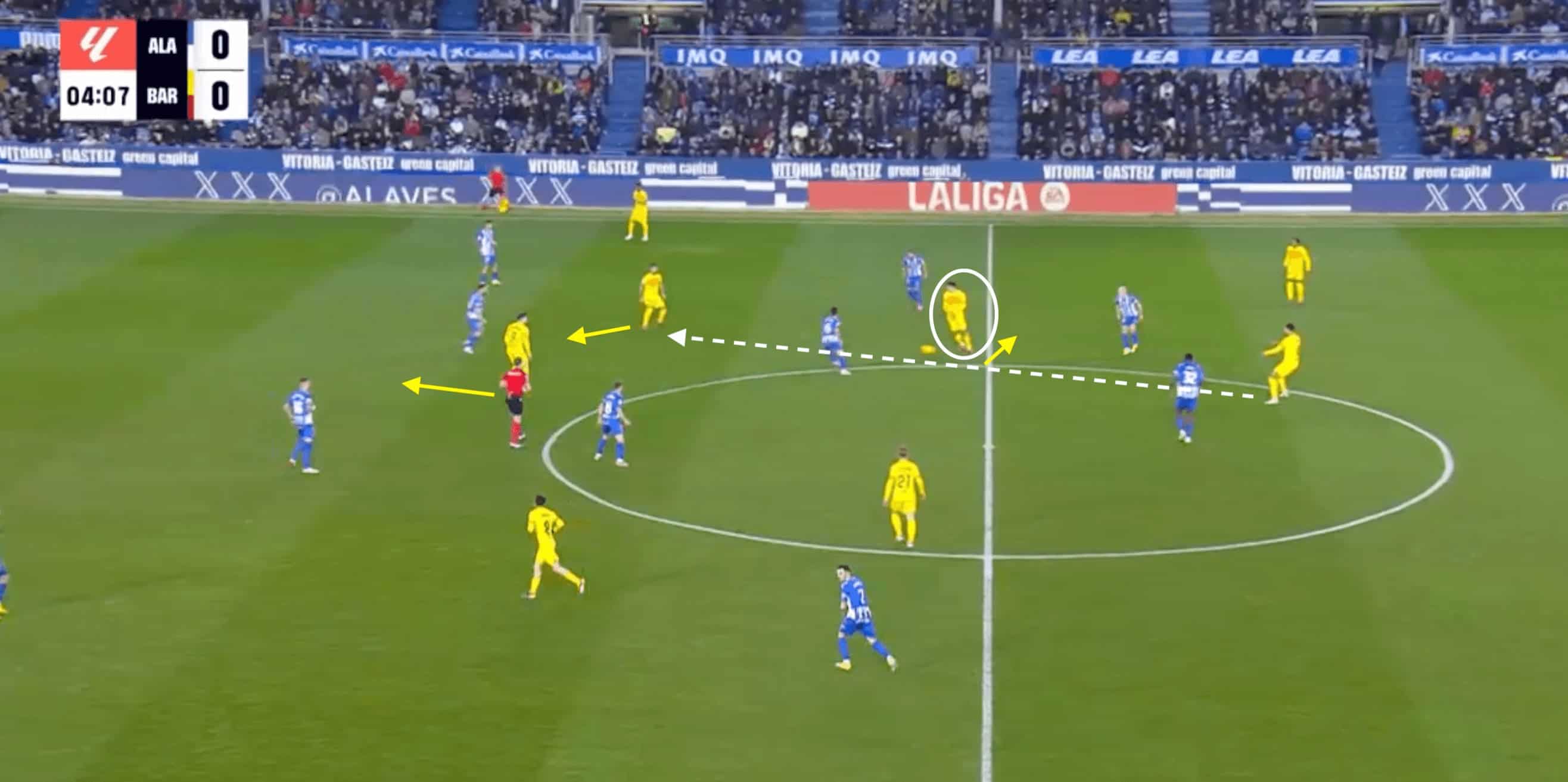
It is clear that Xavi trusts Christensen with the ball at his feet — a key reason why the Dane has been entrusted with the spot in the starting eleven. Even when playing in central defence, Christensen has consistently maintained comfortability in possession with incisive passing to progress the play. His statistics can be slightly skewed due to the alteration in starting position. Christensen has recorded 95.1% passing completion per 90 and 5.41 passes into the final third, placing him in the 83rd percentile for midfielders! This is particularly impressive as it would appear that the transition into midfield has failed to prevent his progressive tendencies from appearing.
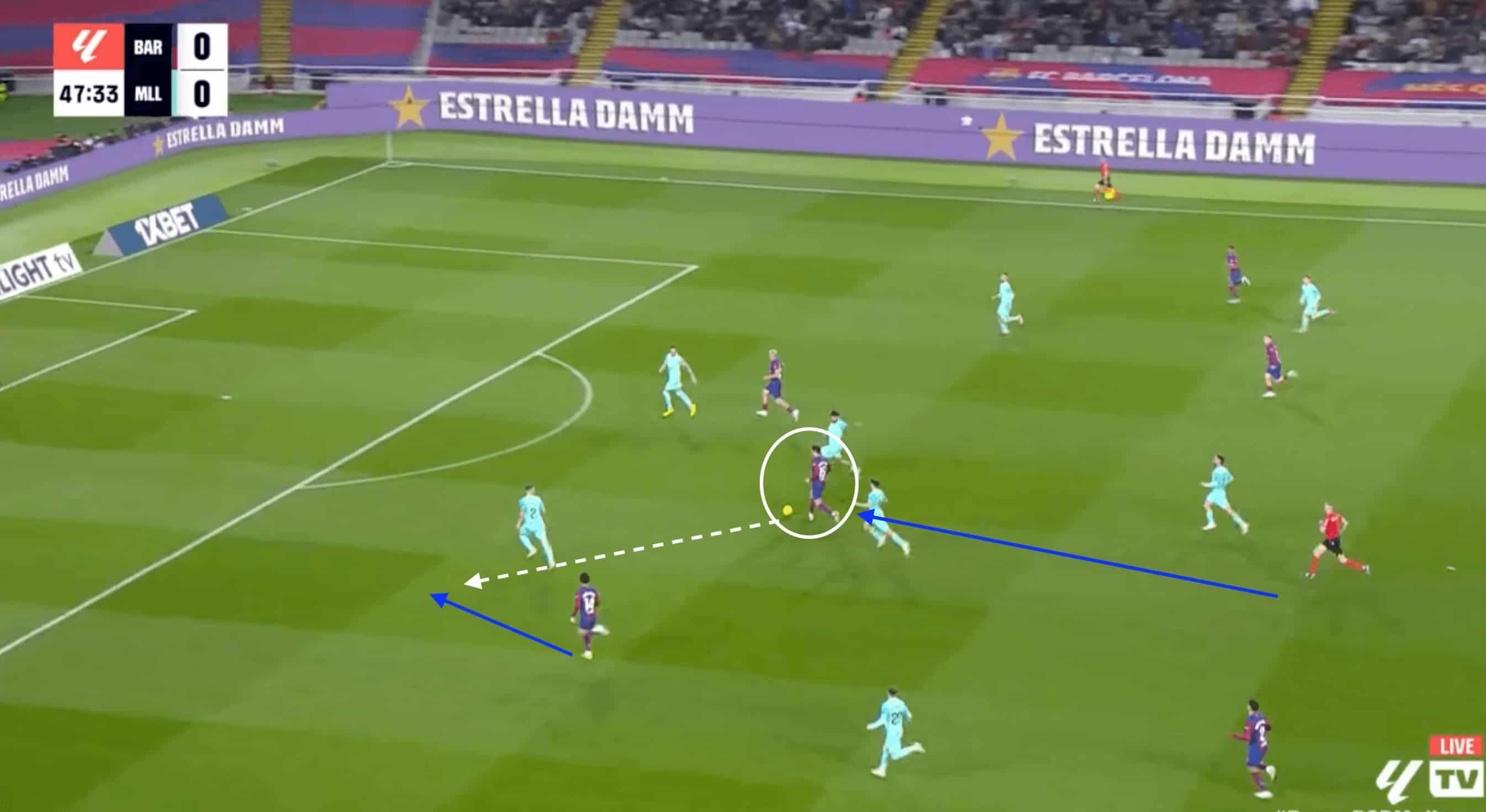
Christensen’s carrying has also been particularly impressive, either within his half evading pressure or even driving into space in front of him and continuing his side’s attack. This was certainly evident against Getafe, where a surging run from the Dane allowed him to receive a pinpoint through pass from Raphinha before sliding it across the box for Felix to convert.

Areas for improvement
Although Christensen has proven to be an important stand-in for Xavi’s side, it is evident that some of his deficiencies may cause Barcelona to search elsewhere come the summer window for a truly versatile midfield option. One of those deficiencies would involve Christensen’s ability to progress up the pitch when receiving with his back to play. Naturally, as a central defender, Christensen benefits from scanning the entirety of the pitch and maintaining the prime position with all the play in front of him.
Therefore, when receiving the ball at the base of the defensive midfield, Christensen has often failed to be as progressive when compared to his more advanced role as a makeshift number 8. Unable to accurately and effectively navigate oncoming pressure, his passes are often straight back towards his defensive line, slowing down the speed of attack for Barcelona. In addition, there have been several instances in which Christensen has succumbed to pressure on his blind side and lost possession of the ball, allowing the opposition to counterattack with speed from critical areas of the pitch.

One way in which Christensen has begun to mitigate this has been a higher level of anticipation and reading of incoming passes, something that would appear to be developing with increased minutes in Barcelona’s midfield. In their recent Champions League tie against PSG, Christensen could expertly let Cubarsí’s inbound pass run across his body, allowing him to quickly shift and deliver the ball towards his forward line, completely bypassing two oncoming PSG pressers. For Christensen to be truly comfortable in midfield, such occurrences must be much more natural and frequent.
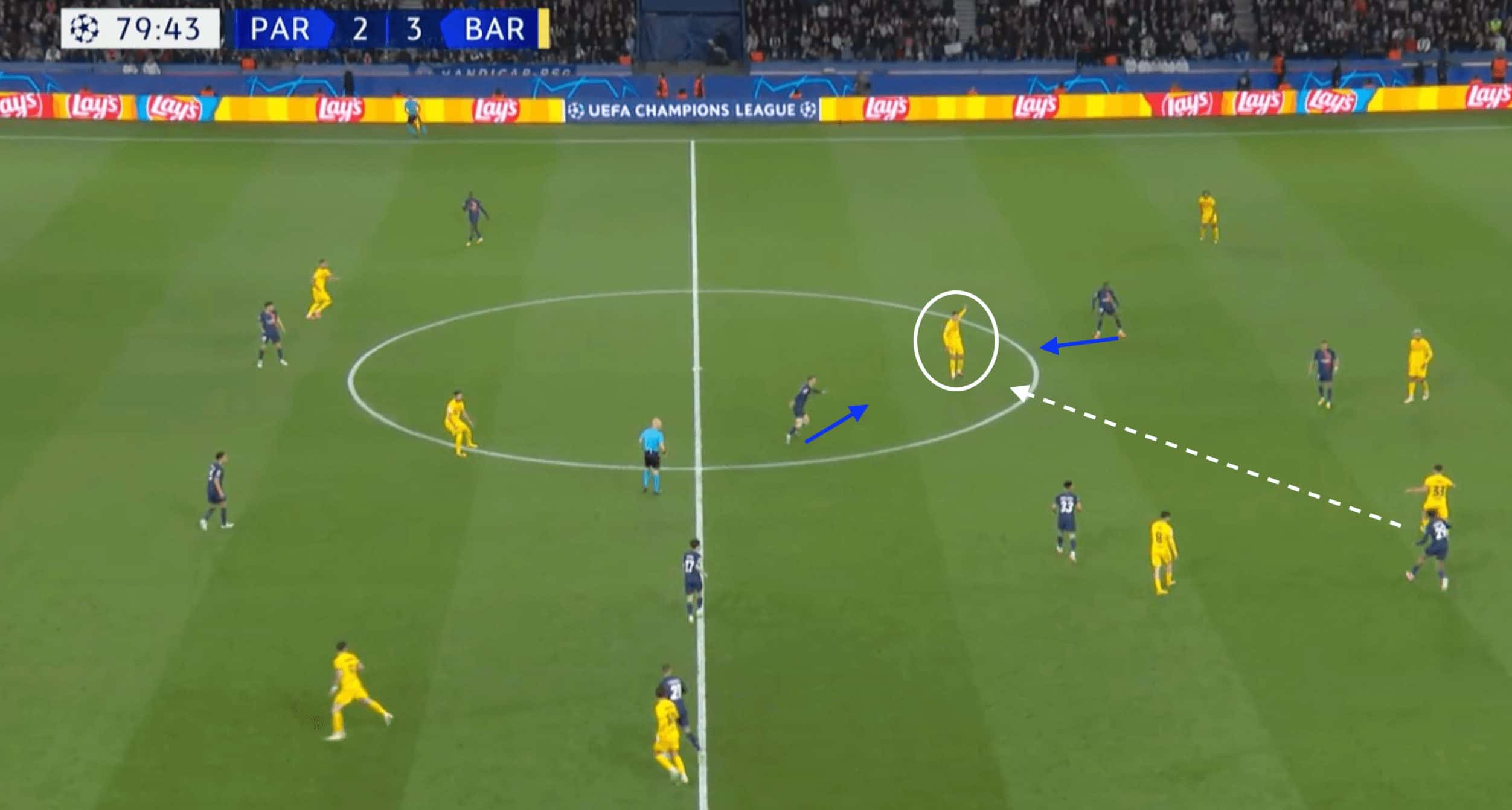
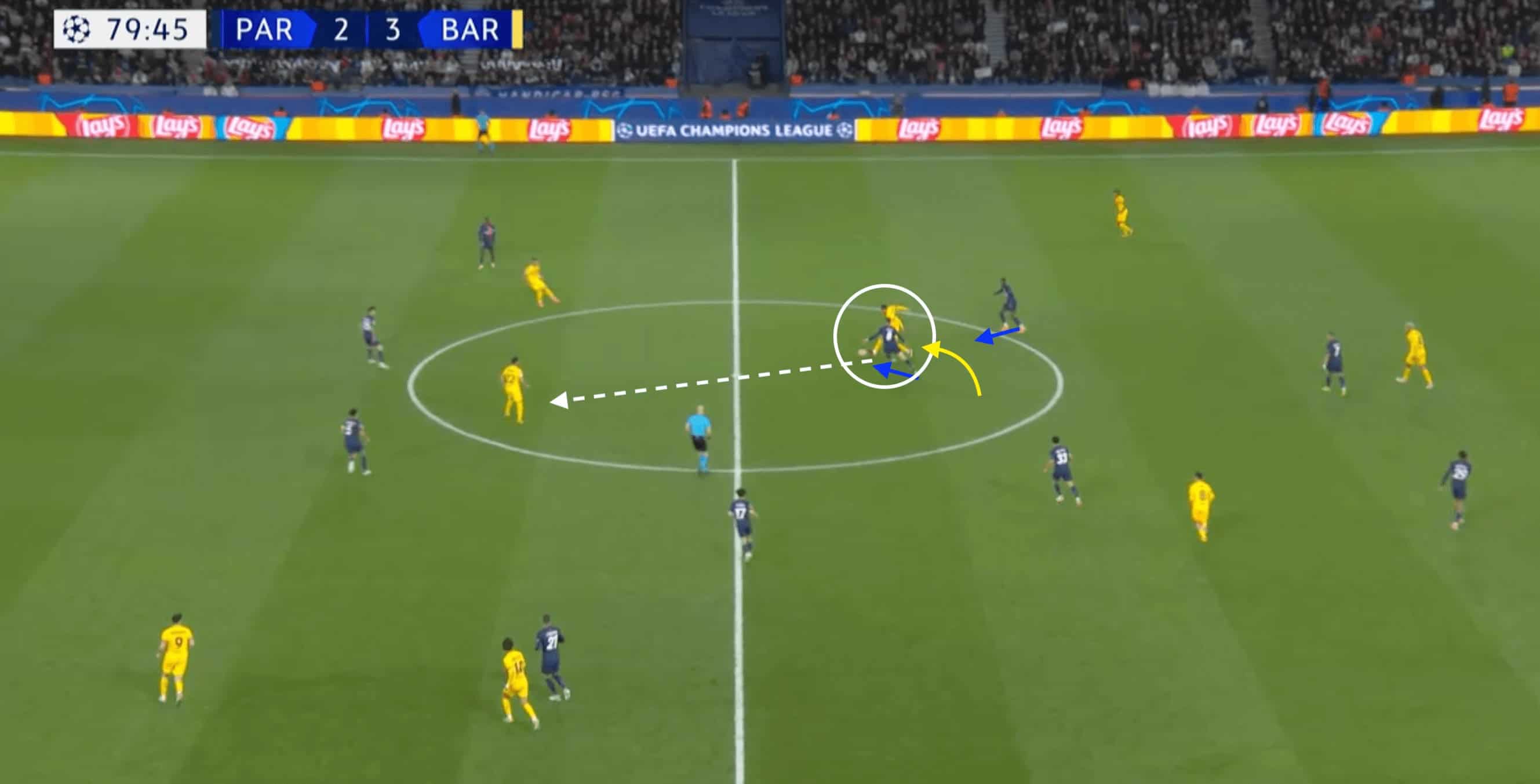
Another aspect of Christensen’s midfield play which has drawn concern would have to be his defensive solidity when isolated away from cover. Whilst it is undoubtable that Christensen has excelled when playing within a well-structured back line, he has appeared to struggle in accurately reading the game when targeted in transition. It would appear that he lacks the kind of mobility required of an elite DM, often appearing somewhat static and easily bypassed, having to rely upon recovery pace and resorting to the concession of fouls. In Barcelona’s league encounter with Mallorca, the away side could counter quickly, catching the Dane on his heels and creating a favourable attacking matchup as Barcelona defenders found themselves scampering back towards their goal.

Conclusion
It is clear that Andreas Christensen has stepped into a vital role and provided a reassuring figure, adding balance to Xavi’s side at a time of need. His influence is not always direct, but results have certainly changed for the better, seemingly due to the increased midfield flexibility and attacking freedom with him in the side. With his deficiencies amplified against tougher opposition, Xavi will have to consider whether his inclusion in the Champions League quarter-finals will provide more positive solutions than new problems. Whilst he may not be a sure-fire long-term option as Barcelona’s true number six, he has certainly proved his value to the Culés in a season where performances to date have been far from optimal.





Comments